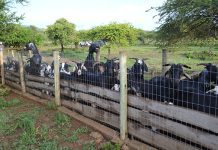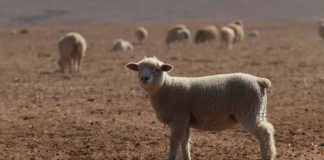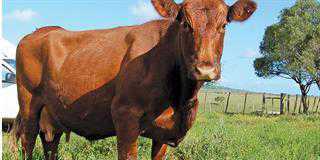“We have certain strains in SA and there are other strains in Europe. The strains in SA affect mostly sheep and although other species can get it, it is usually at subclinical levels. In SA we do not have strains that seriously affect cattle.”
Symptoms include fever, listlessness, lack of appetite and rapid breathing. The mucous membranes of the eyes, nose and mouth may turn red, blue or purple, and the lips may become swollen.
The mouth and tongue develop a bluish-reddish colour, and shallow sores appear on the mucous membranes of the mouth and nose. The sheep’s neck is often twisted, the mouth and tongue are usually so painful that it cannot eat, and its hooves are too sore for it to graze.
During outbreaks, infected sheep must be moved to a small camp with shade, green feed and water close by.
Handle them as little as possible and discuss treatment with a vet. An inoculant providing long-lasting immunity is available; consult with a vet regarding implementation.
Ewes must receive the last inoculation no later than three weeks before mating season, or as soon as they have lambed in winter.
Lambs receive passive immunity through the colostrum from dams. In theory, they should preferably not be inoculated before six months.
In exceptional cases, they should be vaccinated earlier for protection during the dangerous season. Rams must receive the last inoculant two months before the mating season, or alternatively, afterwards.
Take care not to inadvertently spread the disease. Sterilise syringe needles after every inoculation. Move sheep from vlei camps where midges breed to higher-lying areas. Dip or spray the sheep with an insect-resisting agent and keep them under cover at night.
Source: G. Brand (undated). ‘Blue Tongue Information Sheet’ Elsenburg Veterinary Services. www.elsenburg.com.













